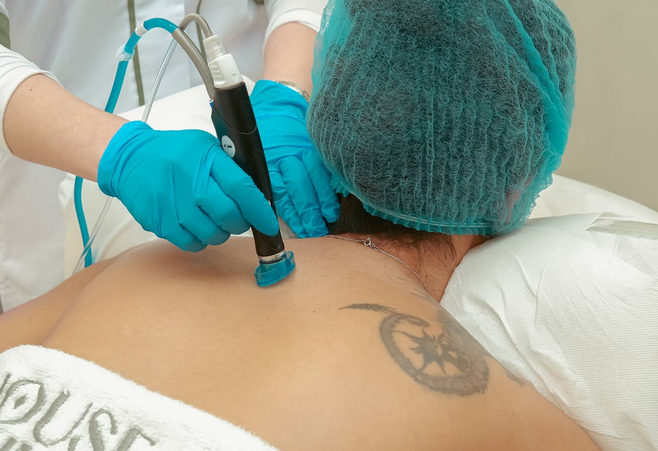Tattoo Removal: What You Need to Know Before Erasing Ink
Tattoos can be a powerful form of self-expression, but sometimes that expression changes. Whether it’s a name you’ve outgrown or an image that no longer resonates with who you are, the desire to erase past ink is more common than you might think. Tattoo removal has become increasingly popular as people seek to reclaim their skin and move forward in life. But before diving into the process, there are several important factors to consider. From understanding how different tattoos fade to the costs and pain involved, being informed will help ensure your tattoo removal journey is as smooth as possible. Let’s explore what you need to know before erasing that ink!
Laser Removal Is the Most Effective Method
When it comes to tattoo removal, laser technology stands out as the gold standard. This method uses targeted light beams to break down ink particles in the skin. Over time, your body naturally eliminates these smaller fragments through its immune system. One of the main advantages of laser removal is its precision. Different wavelengths can target various ink colors without damaging surrounding skin, maximizing efficiency and minimizing complications.
The process typically requires multiple sessions, depending on factors like tattoo size and ink depth. While patience is necessary, many find that lasers deliver impressive results compared to other methods. Additionally, advancements in laser technology continue to improve outcomes and reduce recovery times. Each session brings you closer to your desired result—clearer skin free from unwanted designs.
Not All Tattoos Fade the Same Way
Tattoos come in a variety of designs, colors, and techniques. This diversity means that not all tattoos fade at the same rate or intensity. Some inks are more resistant to fading than others due to their composition. Dark colors like black and blue usually hold up well over time. They can withstand sun exposure and other environmental factors better than lighter shades. On the flip side, pastel tones often lose their vibrancy quickly. The tattoo’s placement also plays a crucial role in how it fades. Areas exposed to sunlight frequently may see faster deterioration than those hidden away.
Additionally, individual skin types can affect how ink breaks down over years. Oily versus dry skin might influence the longevity of your tattoo’s appearance. Understanding these nuances is essential for anyone considering removal or touch-ups. It’s always wise to consult with professionals who understand these intricacies before making any decisions about your body art.
It Can Be Painful and Costly

Tattoo removal is not just a simple process. Many people underestimate the pain involved. Laser treatments can cause discomfort akin to getting the tattoo in the first place. The intensity of pain varies from person to person. While some describe it as a rubber band snapping against their skin, others find it more intense and challenging.
Alongside the physical sensation, there’s also a financial aspect to consider. Each session can be expensive, ranging from hundreds to thousands of dollars depending on size and color. Multiple sessions are typically required for complete removal, which adds up quickly. It’s essential to budget accordingly if you’re considering this option. Potential aftercare costs may also arise if complications occur during healing. Pain and expense are crucial considerations before deciding to erase your inked memories.
Healing Takes Time
After undergoing a tattoo removal procedure, your body needs time to heal. This is an essential part of the process. Swelling and redness are common reactions as your skin begins to recover. Patience is key to healing properly. Rushing things can lead to complications or infections. The area may also scab over as it repairs itself. It’s crucial not to pick at these scabs, no matter how tempting it might be. Letting them fall off naturally ensures better results. During this period, keeping the skin moisturized and protected from sun exposure will significantly aid recovery. Following aftercare instructions carefully can make all the difference in achieving clear skin without lingering effects.
Alternative Methods Exist but Have Risks

Regarding tattoo removal, some people search for alternatives to laser treatments. Options like dermabrasion or chemical peels can be tempting. These methods involve removing layers of skin to reduce the tattoo’s appearance. However, they come with significant risks. Dermabrasion can lead to scarring and uneven skin texture. Chemical peels may cause burns or allergic reactions, leaving you with more than a faded tattoo.
Natural remedies—like salt scrubs or lemon juice—also circulate online, but they often prove ineffective and sometimes harmful. The promise of “quick fixes” rarely delivers results without consequences. Before trying any alternative method, weighing the potential side effects against your desire for ink removal is crucial. Consulting professionals is always advisable; their expertise can help you navigate these risky waters safely.…


